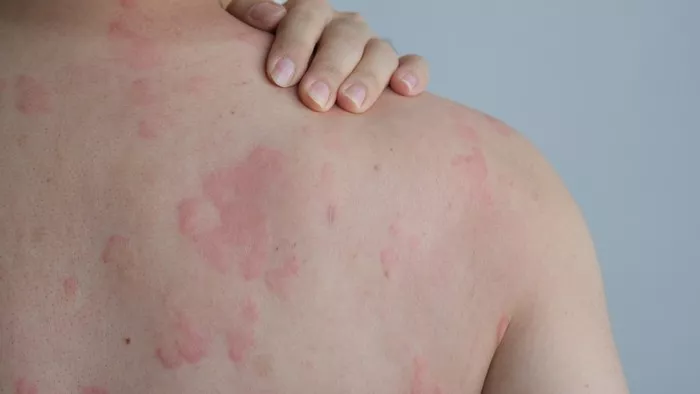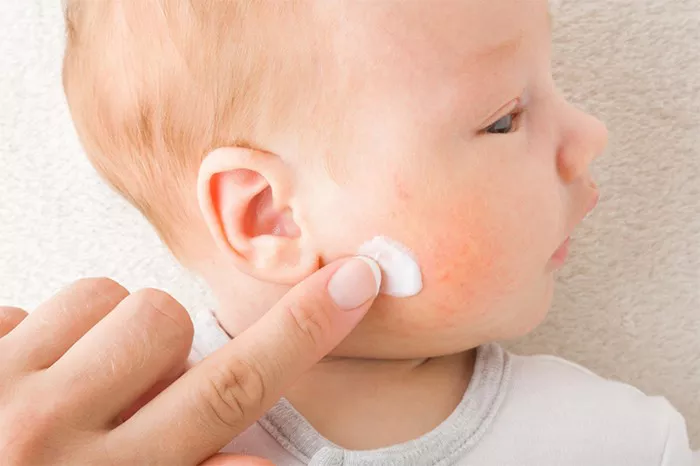Hives and swollen lips are symptoms that can result from a variety of underlying conditions and triggers. While they are often benign, understanding their causes is crucial for effective treatment and management. This article explores the potential causes of hives and swollen lips, examining allergic reactions, infections, autoimmune disorders, and other relevant factors.
1. Allergic Reactions
1.1 Food Allergies
Food allergies are among the most common causes of hives and swollen lips. When an individual consumes a food they are allergic to, the immune system mistakenly identifies it as a threat, leading to the release of histamines. This release results in symptoms such as hives (urticaria) and swelling of the lips. Common allergenic foods include peanuts, tree nuts, shellfish, dairy, and eggs.
1.2 Medication Allergies
Medications can also trigger allergic reactions. Common drugs known to cause such reactions include antibiotics (e.g., penicillin), nonsteroidal anti-inflammatory drugs (NSAIDs), and certain vaccines. An allergic reaction to medication can manifest as hives, swelling, and more severe symptoms like angioedema, which affects deeper layers of the skin and can cause significant swelling.
1.3 Insect Stings and Bites
Insect stings, particularly from bees, wasps, and hornets, can induce allergic reactions leading to hives and swollen lips. The venom from these stings contains proteins that affect skin cells and the immune system, causing localized or systemic allergic responses.
1.4 Contact Allergies
Contact dermatitis, resulting from direct contact with allergens such as certain metals, latex, or cosmetics, can cause hives and swelling. The allergic reaction typically occurs in areas where the allergen made contact, but systemic reactions can also occur, leading to swelling of the lips.
2. Infections
2.1 Viral Infections
Certain viral infections can lead to symptoms such as hives and swollen lips. For instance, herpes simplex virus (HSV) can cause cold sores, which may lead to localized swelling and hives in severe cases. Other viral infections, such as those caused by Epstein-Barr virus (EBV) or cytomegalovirus (CMV), can also trigger similar symptoms.
2.2 Bacterial Infections
Bacterial infections can lead to skin conditions such as cellulitis, which can cause swelling and hives. Infections like impetigo, which often start with red sores or blisters, can also lead to swelling and more diffuse hives as the body reacts to the infection.
2.3 Fungal Infections
Fungal infections, although less common, can also cause skin reactions. Conditions such as ringworm or candidiasis can sometimes lead to hives or localized swelling if the infection becomes severe or if the individual has a hypersensitive reaction.
3. Autoimmune Disorders
3.1 Systemic Lupus Erythematosus (SLE)
Systemic lupus erythematosus is a chronic autoimmune disease where the immune system attacks healthy tissues, leading to widespread inflammation. Symptoms of SLE can include hives, swollen lips, and other rashes as part of the broader spectrum of cutaneous manifestations.
3.2 Rheumatoid Arthritis
Rheumatoid arthritis, primarily affecting the joints, can also have systemic effects including skin symptoms. In some cases, individuals may experience hives and swelling, particularly during flare-ups or when the disease affects the skin.
3.3 Dermatomyositis
Dermatomyositis is an inflammatory condition characterized by muscle weakness and a distinctive rash. The rash can include hives and swelling, particularly around the face and neck, which may involve the lips.
4. Environmental Triggers
4.1 Temperature Extremes
Extreme temperatures, whether hot or cold, can trigger hives in susceptible individuals. Cold urticaria, for example, is a condition where exposure to cold temperatures results in hives and swelling. Conversely, heat-induced hives can occur in response to high temperatures or sweating.
4.2 Sun Exposure
Sun-induced hives, or solar urticaria, are caused by exposure to sunlight. This condition can lead to hives and swelling, including on the lips, as the skin reacts to UV radiation.
5. Chronic Conditions
5.1 Chronic Urticaria
Chronic urticaria is characterized by recurrent hives lasting more than six weeks. The cause is often idiopathic, meaning the exact reason is unknown, but it can be linked to underlying conditions such as thyroid disease or other systemic disorders.
5.2 Angioedema
Angioedema is a condition involving deep tissue swelling, which can affect the lips and other areas. It can be caused by allergic reactions, genetic factors (such as hereditary angioedema), or certain medications (such as ACE inhibitors).
SEE ALSO: What Helps Hives from Stress?
6. Lifestyle and Dietary Factors
6.1 Alcohol Consumption
Alcohol can trigger hives and swelling in some individuals, particularly those who are sensitive or have underlying conditions. Alcohol can cause histamine release or interact with other allergens, exacerbating symptoms.
6.2 Food Additives and Preservatives
Certain food additives and preservatives, such as sulfites and artificial colorings, can lead to allergic reactions in sensitive individuals. These reactions can manifest as hives and swelling, including in the lips.
6.3 Stress
While not a direct cause, stress can exacerbate existing skin conditions, including hives. Stress may trigger or worsen symptoms in individuals with pre-existing conditions or sensitivities.
7. Diagnosis and Management
7.1 Diagnosis
Diagnosing the cause of hives and swollen lips involves a thorough medical history and physical examination. Allergy testing, including skin prick tests and blood tests, can help identify specific triggers. In some cases, additional testing may be needed to rule out autoimmune disorders or infections.
7.2 Management
Managing hives and swollen lips involves addressing the underlying cause. For allergic reactions, avoiding triggers and using antihistamines or corticosteroids can be effective. For infections, appropriate antimicrobial treatments are necessary. Autoimmune disorders may require disease-specific management strategies.
7.3 When to Seek Medical Attention
Individuals should seek medical attention if they experience severe symptoms such as difficulty breathing, significant swelling, or if the symptoms persist despite avoiding known triggers. Prompt medical intervention is crucial for severe allergic reactions or complications.
Conclusion
Hives and swollen lips can arise from a wide range of causes, including allergic reactions, infections, autoimmune disorders, environmental triggers, and lifestyle factors. Understanding the underlying causes is essential for effective treatment and management. Individuals experiencing these symptoms should consult healthcare professionals for accurate diagnosis and appropriate management strategies to address their specific needs and improve their quality of life.
Related Topics:


























